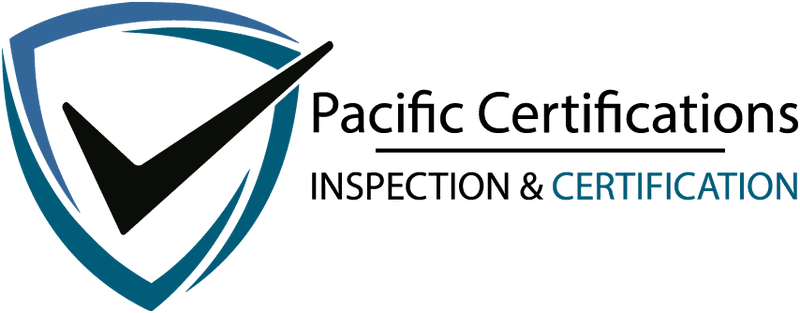What is ISO 16070?

ISO 16070:2005 is an international standard that specifies the requirements for lock mandrels and landing nipples used in downhole equipment in the petroleum and natural gas industries. These components are crucial for well operations, as they are designed to propagate the secure placement of tools and devices within the wellbore, ensuring proper functioning during drilling, completion and production activities. ISO 16070:2005 provides detailed guidelines for the design, materials, testing and performance of lock mandrels and landing nipples to ensure they meet the rigorous demands of downhole conditions.
The standard ensures that these components function effectively in various well environments, with high resistance to pressure, temperature and corrosion which are commonly found in petroleum and natural gas operations.
For more information, contact us at support@pacificcert.com.
Purpose
The purpose of ISO 16070 is to provide a standardized framework for manufacturing, testing, and using lock mandrels and landing nipples in downhole applications. The standard ensures that these components meet the necessary safety, quality, and performance requirements to function reliably under challenging downhole conditions. By following this standard organizations can ensure that their well equipment performs as expected, reducing the risk of failures and operational issues during drilling and production.

Scope and Applicability
ISO 16070 applies to all organizations involved in the design, manufacturing, and use of lock mandrels and landing nipples for downhole equipment in the petroleum and natural gas industries. It is especially relevant for companies engaged in well completion, drilling operations, and equipment manufacturing. The standard provides essential guidelines for the materials, construction and testing of these components to ensure their compatibility with the demanding conditions of the oil and gas industry.
ISO 16070 is used by equipment manufacturers, drilling contractors, and oilfield service companies who require reliable and durable downhole components to ensure safe and smooth operations in various well conditions.
Key Definitions
- Lock Mandrel: A device used in downhole equipment that securely holds tools in place within the wellbore.
- Landing Nipple: A component designed to provide a location for securing downhole tools such as plugs, valves, or seals in place during well operations.
- Downhole Equipment: Tools and components used in drilling, completing, and maintaining oil and gas wells, operating under high-pressure, high-temperature conditions.
- Wellbore: The hole drilled in the ground that forms the structure of an oil or gas well.
Clause-wise structure of ISO 16070:2005
Clause Number | Title |
| Description |
Clause 1 | Scope | Defines the scope of the standard and specifies the types of downhole equipment covered. | |
Clause 2 | Normative References | Lists the standards and documents referenced in ISO 16070:2005. | |
Clause 3 | Terms and Definitions | Provides essential definitions used throughout the standard to ensure clarity. | |
Clause 4 | General Requirements | Describes the overall requirements for lock mandrels and landing nipples, including materials and design. | |
Clause 5 | Material Requirements | Specifies the material properties required for these downhole components to ensure durability and performance. | |
Clause 6 | Manufacturing Process | Details the manufacturing methods and quality control measures for producing lock mandrels and landing nipples. | |
Clause 7 | Performance and Testing | Outlines the performance tests required to verify the strength, durability, and suitability of these components for downhole use. | |
Clause 8 | Packaging and Marking | Specifies the packaging, labelling, and marking requirements for these components to ensure proper identification and traceability. | |
Clause 9 | Compliance and Certification | Describes the process for certifying that the lock mandrels and landing nipples meet ISO 16070:2005 standards. |
What are the requirements of ISO 16070?
ISO 16070 outlines several important requirements for lock mandrels and landing nipples used in petroleum and natural gas wells.
It specifies a perfect set of guidelines to ensure the safe and reliable use of lock mandrels and landing nipples in well operations. The standard provides detailed criteria for materials, manufacturing processes, testing and performance to ensure that these components function reliably under harsh downhole conditions. Below are the key requirements:
To implement ISO 16070 successfully, organizations must:

- Ensure that lock mandrels and landing nipples meet specific mechanical properties, including resistance to high pressure, corrosion, and high temperatures.
- Follow standardized processes for producing these components, ensuring uniformity and durability.
- Conduct thorough tests, such as pressure and temperature resistance tests, to ensure that the components perform effectively under expected well conditions.
- Ensure that the lock mandrels and landing nipples meet the required dimensional standards for compatibility with other downhole equipment.
- Implement quality control measures throughout the manufacturing process to ensure that each component meets the standard’s specifications.
For more information, contact us at support@pacificcert.com.
What are the benefits of ISO 16070 Certification?
ISO 16070 certification provides several advantages for organizations involved in the manufacturing and use of downhole equipment.
It offers several benefits that upgrade the reliability and safety of downhole operations. By adhering to the requirements of the standard, organizations can improve product quality, reduce risks and increase customer satisfaction. Below are some of the key benefits of obtaining ISO 16070 certification:

- Certification ensures that lock mandrels and landing nipples meet strict quality requirements, improving their reliability in downhole operations.
- Certification minimizes the risk of failures, accidents, and operational inefficiencies during well construction and maintenance.
- Achieving certification helps organizations meet industry standards and regulations related to well construction and safety.
- ISO 16070 certification upgrades the credibility of manufacturers and suppliers, demonstrating a commitment to quality and safety.
The demand for ISO 16070 certification will continue to grow in the coming years as more companies in the petroleum and natural gas industries prioritize safety, quality, and compliance. As the industry faces increasing regulatory scrutiny and operational complexities, certified components such as lock mandrels and landing nipples will be in higher demand to meet safety standards and ensure the success of drilling operations.
Certification Process
The certification process for ISO 16070 typically involves the following steps:
- Pre-Certification Assessment: Conducting a gap analysis to identify any areas for improvement in manufacturing and testing processes.
- Documentation Review: Reviewing existing processes, records, and procedures to ensure compliance with ISO.
- Stage 1 Audit: A preliminary audit to evaluate the organization’s readiness for certification and to identify any potential issues.
- Stage 2 Audit: A detailed audit to evaluate the actual implementation of processes, manufacturing, and testing.
- Certification Decision: Certification is awarded if all requirements are met and the organization demonstrates compliance with ISO.
- Ongoing Monitoring: Regular surveillance audits ensure continued compliance with ISO 16070.
Timeline for ISO 16070 Certification
The timeline for ISO 16070 certification typically spans several months. The pre-assessment and preparation phase generally takes 1-2 months, during which the organization reviews its existing practices. The Stage 1 audit typically lasts about 1 month, focusing on documentation and readiness. The Stage 2 audit, which involves a thorough review of the implementation process, typically takes 1-2 months. Certification issuance typically occurs within 3-6 months, depending on the audit findings and the organization’s readiness for certification.
What is the Cost?
The cost of ISO 16070 certification can vary depending on the size of the organization, the complexity of its operations, and the number of components manufactured. The typical costs include:
Audit Fees is the fees for the certification body’s audit process. Training costs are the costs for educating staff on ISO 16070 and the necessary processes to comply with the standard. Ongoing maintenance is the cost for regular audits, recertification, and maintaining compliance every 3 years.
How Pacific Certifications Can Help?
At Pacific Certifications, we provide great auditing and certification services for ISO. Our team will guide you through the entire certification process, ensuring that your organization complies with the highest standards for lock mandrels and landing nipples. Our services include:
- Stage 1 and Stage 2 audits to evaluate the manufacturing and testing processes.
- Objective conformity assessments based on ISO 16070.
- Certification issuance upon successful completion of the audit.
- Ongoing surveillance audits to ensure continued compliance.
- Support for multi-site or global operations.
For audits and certification, contact support@pacificcert.com.
ISO 16070 Training and Courses
Various training courses are available to help organizations comply, including:
- Lead Auditor Training – Equips professionals to conduct external third-party audits.
- Lead Implementer Training – For those responsible for planning and executing ISO 16070 implementation.
- Internal Auditor Training – Preparing internal auditors for certification audits
Pacific Certifications provides accredited training programs. If your organization is looking for ISO training, our team is equipped to help you.
Frequently Asked Questions (FAQs)
How long does it take to get ISO 16070 certification?
The certification process typically takes 3–6 months, depending on your organization’s preparedness and audit outcomes.
Is ISO 16070 certification mandatory for all lock mandrel and landing nipple manufacturers?
While it is not legally required, ISO 16070 certification helps ensure that your products meet industry standards for safety and reliability, making it highly recommended.
What are the main benefits of ISO 16070 certification?
Certification ensures compliance with international standards, improves product quality, upgrades operational safety, and builds customer trust.
Can I apply for ISO 16070 certification without a quality management system in place?
No, a quality management system is necessary before applying for certification to ensure compliance with the standard.
How often do I need to renew ISO 16070 certification?
ISO 16070 certification is valid for three years, after which recertification is required.
Ready to get ISO 16070 certified?
Contact Pacific Certifications to begin your certification journey today!
Suggested Certifications –
Read more: Pacific Blogs








